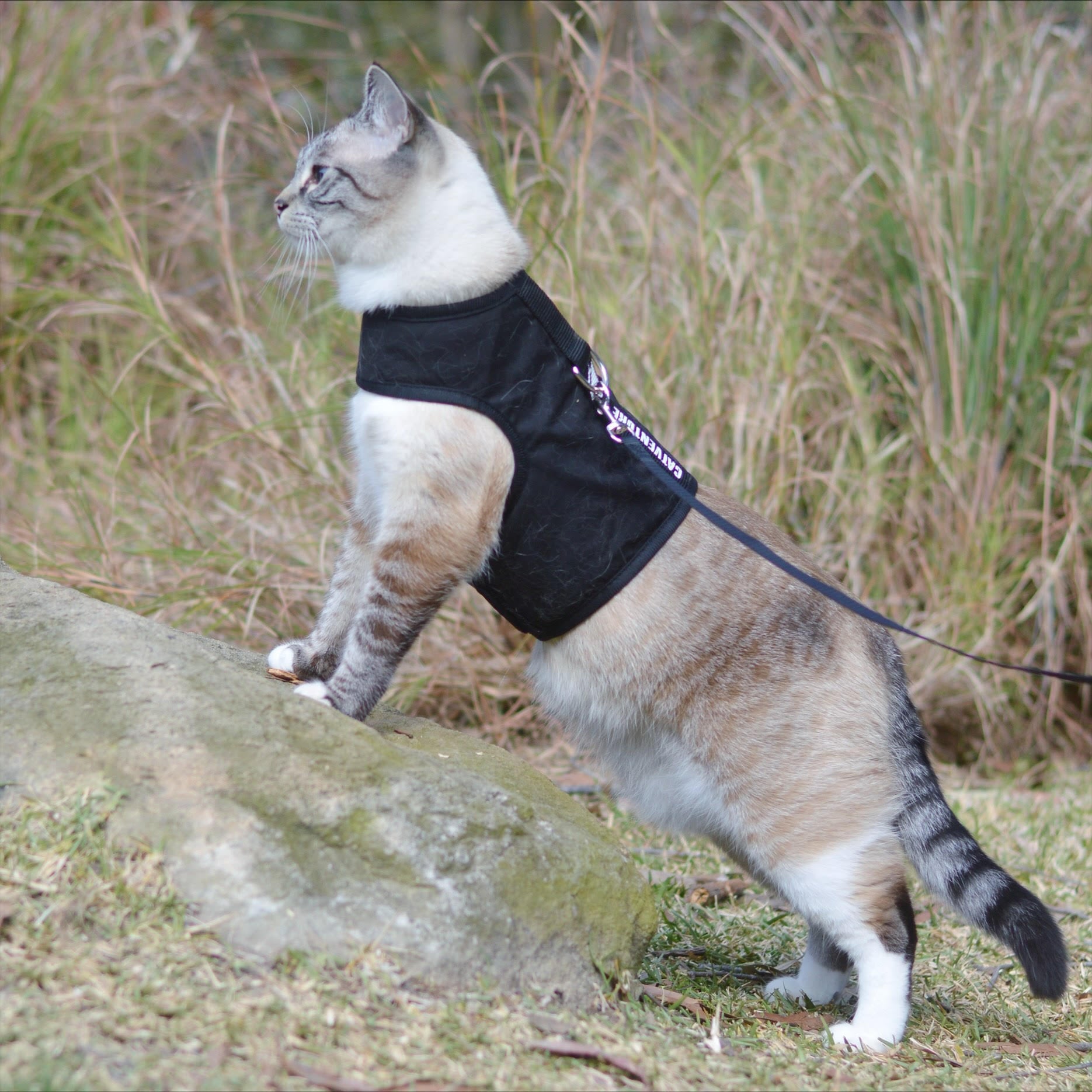Many cat owners assume that their feline friends are not able to be trained to walk on a leash, but with patience and consistency, it is possible to teach your cat to enjoy leash walks. Leash walking can be a great way to provide your cat with mental and physical stimulation and can also be a fun bonding activity for the two of you.
Most cats and kittens, can be trained to walk in a cat harness and lead. It can be somewhat of a process though before your taking your cat for trail walks and hikes. Most, especially house cats love the opportunity to safely explore the outdoors. After all it is their natural environment.
When finding your cats harness, ensure that it is an escape proof cat harness. Harnesses are essential when walking your cat, do not try attach a lead to a standard cats collar as they can strangle your cat. Having the leash/lead attachment towards the middle of the cat rather than at the neck is much safer and more comfortable for your cat. It's important to refer to the cat harness size chart when measuring your cat to ensure the correct snug fit.
If you've ever wondered how to train a cat to walk on a harness, the trick is to start slow, take baby steps forward, and expect setbacks. As you probably already know, they are not dogs and they'll do what they want. You just have to coerce them with treats (especially when they're hungry), verbal praise, pats and ear scratches.
Before going outside you should get your cat accustomed to wearing the harness and leash inside. Start off by leaving the harness near your cat's food bowl to get them used to seeing it in places they associate with good things.
Put the harness on your cat once they've had a chance to sniff it out. Make sure it's snug but not too tight, best done with an adjustable cat harness. As soon as you strap it on, give them a treat. If they take a step in the harness, give them another one.
If your cat drops to the ground, seems frozen or seems super stressed out, remove the harness and give a treat as a peace offering. Giving treats immediately is crucial because of cats short attention span. They will get more used to it over time, however make sure that you aren't too pushy with it. You'll know when they've had enough.
Once your cat is walking around in the harness and leash, you can step outside. It is best to start off slow, its can be your front or backyard. You can then work it up depending on how easily your cat adjusts to being outdoors and being on the harness.
It's a good idea to take note of your immediate neighbourhood. Is there lots of cars, dogs, or other distractions. The quieter the area, the safer and more comfortable they will feel.
Make sure your cat doesn't pick up anything in their mouth or lick anything. Also, tree climbing is a big no no for leashed cats and i'm sure you can imagine why.
Don't tie your cat's leash to something and leave them unattended. If they get scared they can tangle themselves or fail to escape a dangerous situation.
Expect setbacks. Sometimes it will be 2 steps forward 1 step back. Your cat might do really well one day, yet go half as far the next. It is best to go back to the last place they felt comfortable, and start moving forward with little steps again.
If you're feeling a little overwhelmed and think that training your cat will be extremely difficult, our Cat Harness Training Bundle. This package includes the Catventure harness and leash with a 1-hour online cat harness training video session. In this training Melina from Pet Nurture will assist you in training your cat in their new Catventure harness.
@catharnessaustralia Our beginners cat harness training guide 🐈 #cat #catsoftiktok #catharness ♬ SUN GOES DOWN - Andreas Roehrig



















